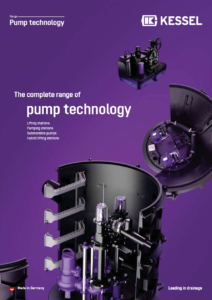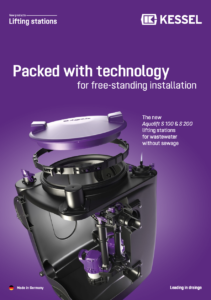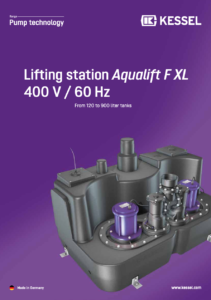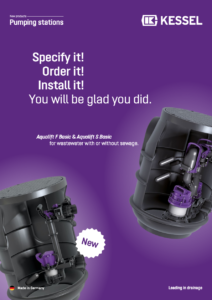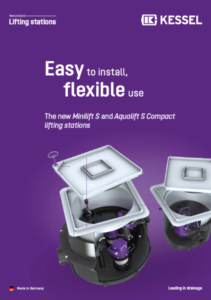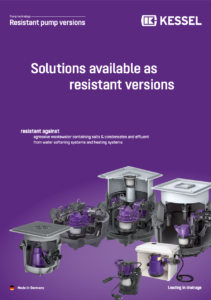Everything that experts need to know
When a washing machine, bathroom, or commercial kitchen is located in the basement, it is important to consider how the wastewater will be discharged. This is because a drainage point in the basement is usually below the backwater level. This means that the wastewater cannot flow down a natural gradient to the sewer, as with a gravity system, but has to be pumped up with a lifting station or pump. In addition to the pumping height, the type of wastewater is an important criterion when choosing a suitable product: black water (wastewater with sewage) always requires different solutions than grey water (wastewater without sewage).
Product Types
In addition to the classic lifting stations and pumping stations, pump technology also includes the new hybrid lifting stations as an environmentally friendly and economical alternative for backwater protection. Before you learn more about the individual product types in our articles, you can get a quick overview of the basic distinguishing features:

Lifting Station
- Continuously pumps wastewater through the backwater loop, in most cases, thus preventing the ingress of water.
- Exposed or floor slab installation.

Hybrid Lifting Station
- Pumps wastewater only in the event of backwater; backwater valve prevents the ingress of water.
- Exposed, floor slab or underground installation.
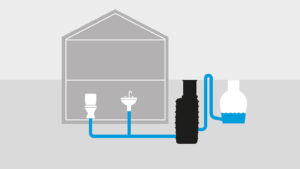
Pumping Station
- Continuously pumps wastewater through the backwater loop, in most cases, thus preventing the ingress of water.
- Underground or floor slab installation.
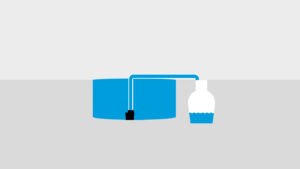
Submersible Pump
- For pumping larger quantities of clear water, rainwater and wastewater.
Types Of Wastewater
When deciding on the correct product, one criterion is very important: water without sewage – so-called grey water – requires different solutions than water with sewage (black water). The free ball passage of a pump indicates the maximum size of solids permitted, so that they can pass freely through the pump without any problems. This is important when selecting the pump so as to ensure clog-free operation.

Lifting stations for wastewater with sewage
Lifting stations according to DIN EN 12050-1 are suitable for the disposal of black water – for example, for wastewater from toilets and urinals.

Lifting stations for wastewater without sewage
Lifting stations according to DIN EN 12050-2 are designed for grey water – i.e. water without sewage from the shower or washing machine. The maximum particle size for these lifting stations is only 10 mm.
Probe Types
Specific probes or sensors are used in lifting stations and pumping stations to determine the water level in the wastewater tank. Depending on the application of the respective probe, this can be used to initiate pumping processes or trigger an alarm when water accumulates in the tank. Five types of probe are available for selection, each of which is suitable for specific operating conditions:
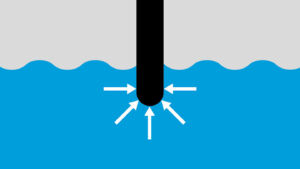
Pressure Sensor
The water level in a lifting station or pumping station can be determined using a pneumatic level measurement with an immersion pipe inside the tank. Rising water compresses the air inside the immersion pipe, increasing the air pressure which is monitored by the control panel. The pressure sensor measures the pressure and triggers the pumping process as soon as the corresponding level value is exceeded.
Pressure sensors are inexpensive and easy to handle. However, their function can be impaired by extremely greasy wastewater, a very long pressure hose or by condensation in the pressure hose.
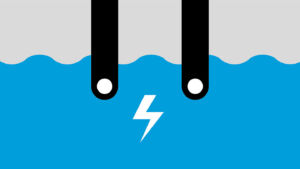
Conductivity Probe
A conductivity probe used as a level sensor in a lifting station or pumping station triggers the pumping process as soon as the water reaches two closely spaced measuring points. The AC voltage that is present results in the current flowing through the conductive liquid between the measuring points. This gives the control unit the signal to activate the pump.
A conductivity probe can be used to determine the water level in a wastewater tank in a simple and inexpensive manner. However, it only works with conductive liquids and cannot be used in pump technology for pumping rainwater or condensate.

Float Switch
In a lifting station or pumping station equipped with a float switch, the pumping process is triggered if a float is pushed to the top of the wastewater tank by the rising water. As soon as the float has reached the corresponding level, the control unit receives the signal to activate the pump.
The float switch is a simple and proven type of probe, but it is not suitable if heavily contaminated wastewater is introduced to the lifting station or pumping station. In this case, dirt can deposit on the float and impair its function.
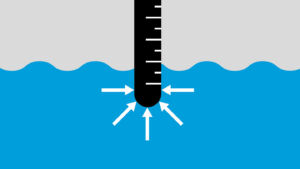
Hydrostatic Sensor
Hydrostatic sensors measure water pressure. If a hydrostatic sensor is used as a probe in a lifting station or pumping station, the measured values are then converted into analogue signals. These signals are used to trigger different actions in the control unit depending on the water level, such as activating the pump or triggering an alarm.
The great advantage of hydrostatic sensors is that they can fulfil not only one but several tasks. For example, they make it unnecessary to equip pump technology with separate alarm probes. But this also generally makes them more expensive than other types of probe.
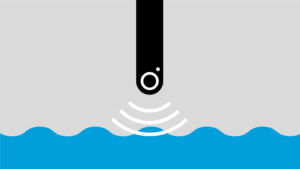
Optical Probe
Optical probes are used as alarm probes in lifting stations and pumping stations. They emit an optical signal in the form of infrared light, the refractive angle of which changes when exposed to liquid. As soon as the probe detects such a change, the alarm is triggered.
In comparison to other probe types, optical probes are generally better suited than alarm transmitters because they function reliably even after long periods of inactivity. However, they can trigger false alarms if they are used in lifting stations or pumping stations with heavily foaming wastewater, excessive presence of Fats, Oils and Greases, or if condensation forms on the probe due to hot wastewater vapours.
Impeller Types
In addition to a professional installation, the proper functioning of lifting stations and pumping stations is dependent on whether the appropriate equipment has been selected for the respective application. The type of impeller used to pump the wastewater plays an important role. Three basic impeller types are available for selection.
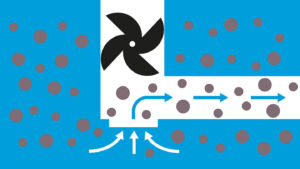
Multi-vane Impeller
Pumps with a multi-vane impeller have a large cavity, through which the wastewater containing long fibres, such as sanitary towels and textiles, can be discharged without any clogging. In comparison to other impeller types, multi-vane impellers usually require a higher energy input to achieve the same pump performance.
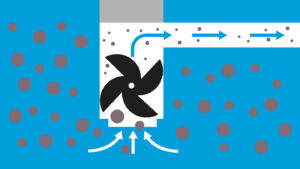
Macerator
Macerators or cutting wheels chop the coarse materials in the wastewater during the pumping process. Even large, long-fibre solids can be split and pumped out in this way. Macerators are therefore also suitable for drainage in challenging environments where the wastewater has to travel long distances through pressure pipes with a small diameter.
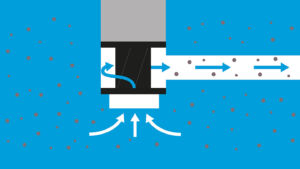
Channel Impeller
Single and multi-channel impellers are used to convey wastewater containing sold or thick, short-fibre materials. They are very energy-efficient and are, therefore, particularly suitable for pumping out large quantities of wastewater.
Operating Modes
Pumps can either function continuously or in periodic intermittent operation. The operating modes are indicated by combinations of letters and numbers from S1 to S9, with S1 being continuous operation and the designations starting from S2 being intermittent operation. In the particular case of intermittent-operated wastewater pumps, the operating mode is often referred to as S3 – for example, also at KESSEL.
Pumps with operating mode S1 are used to dispose of large, continuously accumulating quantities of wastewater. With intermittent operation or periodic operation, the maximum operating time of the pump is limited to a certain proportion per 10 minutes (information in % or min.). Deciding on which operating mode is right for your lifting station or pumping station is dependent on the frequency and quantities of wastewater being discharged through the system.
KESSEL Pump Types
The requirements of a lifting station or pumping station are just as individual as the selection diversity in the pump area. If you look around the range, the letter combination in the product name will tell you a lot about the technical equipment used in a pump or for which application it has been designed. We have listed the functionalities behind the individual abbreviations here:
Abbreviation |
Meaning |
|---|---|
| KTP | KESSEL submersible pump |
| GTF | Submersible grey water pump with multi-vane impeller |
| GTK | Submersible grey water pump with channel impeller |
| SPF | Black water pump with multi-vane impeller |
| SPZ | Black water pump with macerating system |
| STZ | Submersible black water pump with macerating system |


